“That’s a widow-maker,” I said while pointing to a nearby tree. I was speaking to Bret who was proudly standing next to the wall tent he’d just put up. He now looked confused. It was clear he had no clue what I was talking about.
“That tree…” I again pointed up to the massive Douglas-fir just 75 feet away from the tent that would be our cook shack for a week.
In my timber falling days, that’s what we named trees with dead branches or tops. Before starting to cut down a tree, the first thing I was taught to do was to look up to see if there was dead wood anywhere on the crown of the tree that could come loose and clock you on the head; hence “widow-maker.” At the same time, you checked for dead “leaners,” adjacent trees that were wind-swept into the one I had planned to cut. The second rule was to make sure there was an escape route and make it clear so there was a way to step back from the several tons of wood that were about to fall.
Indeed, the big fir had a fair share of dead branches on it. It was the largest tree I had found in the entire Moose Creek drainage and was probably 400 or 500 years old. At the base, I guessed it was around 5 feet in diameter and reached to the sky around 140 feet. For an inland fir in an arid climate, this was a big specimen. Pacific Coast firs can easily surpass sizes of over 10 feet in diameter and 3 times that height, given the abundant precipitation that continuously rolls in from offshore.
After a quick survey of the lean of the tree and an evaluation of the direction of prevailing winds along with the more than 70 percent living canopy on it, I told a relieved Bret that his tent position would probably be OK for this week in mid-July. Snow deposition was unlikely over the next few days; it was the only other factor that could trigger breakage or collapse of the tree. I had seen many of these ancients fall, yielding to one or all of these factors over the past several years over the thousands of acres of forests we ran cattle in.
It wasn’t a question of if. It was when the tree would crash to the ground.
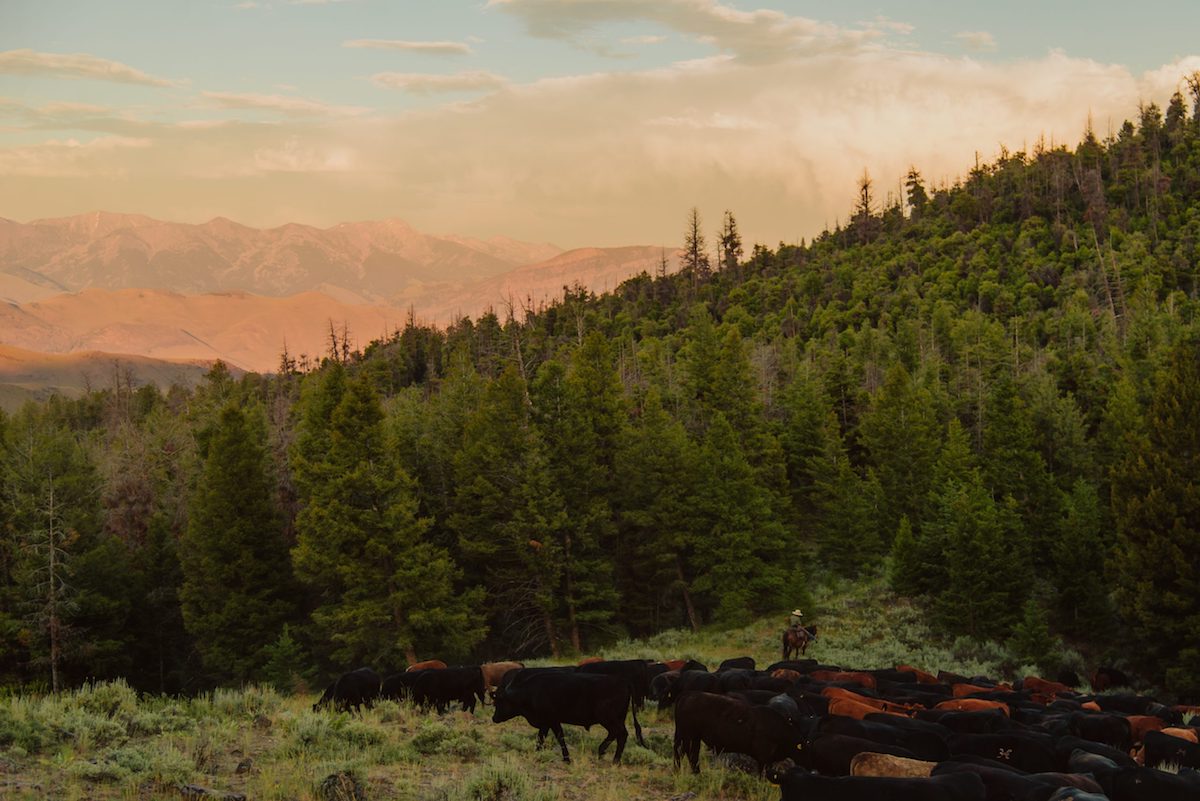
1986. Timber Marking Crew. Salmon, Idaho.
Wearing the trademark Filson “cruiser” vest of canvas and Cordura, I slowly worked across a steep and remote mountainside of old growth Douglas-fir forest with my crew mates. On my belt was a retractable 100-foot tape, called a logger’s tape, and around my neck, a Silva Type-15t Ranger compass. In my vest pockets were a Suunto clinometer and a leather-bound data card, and in my right hand, a quart of blue radioactive marker “tracer” paint attached to a steel handle that I could squeeze to dispense it with in a heavy squirt-gun spray.
All of it had the occasional blue speckle of windborne paint droplets gone wild.
It was all forestry gear for the business of marking and measuring trees. We were marking them for loggers to cut after a government oral-auction timber sale which we would hold in the local office. High bidder would take all, and would have a year to cut the timber and haul it to the sawmill, who would pay them for the logs.
It was the culture of western logging towns all across the west in the 1960s, all the way into the 80s. We were supposed to mark timber in accordance with the principles of “sustained yield,” a long-lived forestry term applied to forests worldwide since the practice of forestry’s inception.
The idea was that we wouldn’t cut more than the forests could produce in perpetuity. After all, trees were a renewable resource—they grew back from seed and seedlings. Some trees, like redwoods, could even sprout from a cut stump. It all fell under the term of Silviculture, the definition of the practice of growing trees or forests. A silviculturist wrote the prescription for every timber stand we marked for harvest, always embracing the sustained yield doctrine.
It’s why we were sent on the mission that we often facetiously called the “BFA” mindset, which simply stood for Boards for America. The prescription was to cut the big trees down to make room for the little ones to grow. It seemed like a good idea at the time. It was simply tree euthanasia, we thought. The old ones were losing productivity; their tree rings verified that. Every stump that I examined post-logging exhibited much slower growth in recent years. They were slowing down; losing efficiency. Fact is, I thought they were slowly dying. The paint and saw combination would end all that, and the new young trees, suppressed by the big trees would take off when I relieved them of the “overstory competition.”
And that I did, summarily, with my paint can.
We didn’t know it at the time, but we were marking for logging and BFAs at the end of an era. The years from 1960 to the 80s were the peak of where timber harvest met science, and the new silviculture we were practicing was much more than getting wood out as fast as possible. Sustained yield was finally embraced and calculated into our prescriptions. Removing these old non-productive trees would make room for a new fast growing forestry. It all made so much sense.
Forestry had undergone a multitude of growing pains over its journey through time. 1980s forestry seemed to be at the cutting edge—we thought we had arrived. But the truth was that just like the old-growth fir I was marking to be cut, the practice of our silviculture would come under the saw as well.
And maybe die.
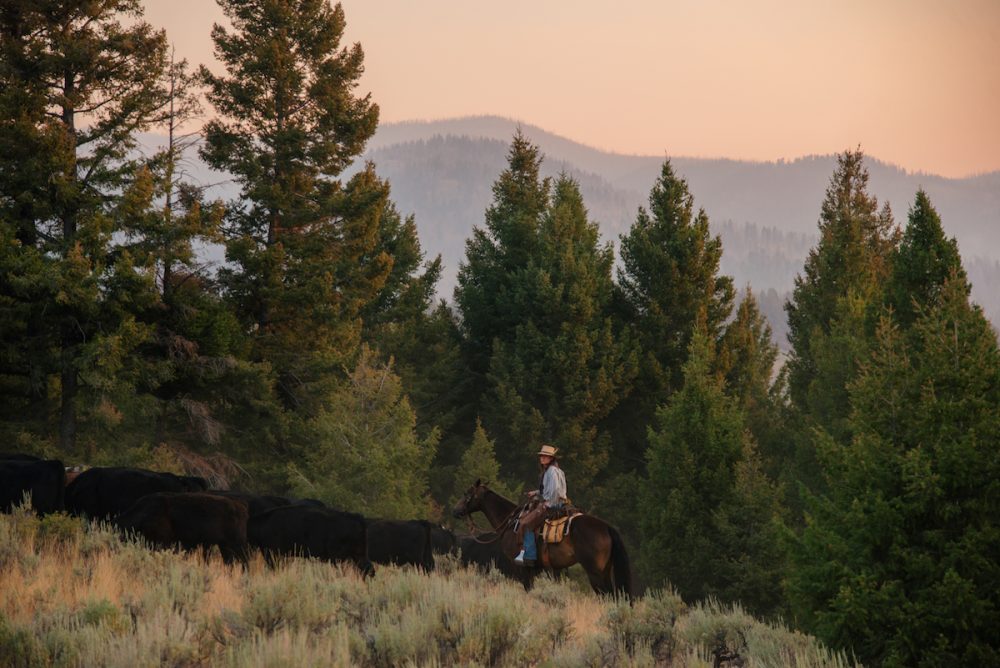
1995. District Forester. Salmon, Idaho.
It wasn’t too late, I thought. In just a few short years after a multitude of tree ring studies and talking with scientific forestry researchers I came to the realization that we had been logging all wrong. A few of us finally surmised that those huge old-growth trees were capable of continuing efficient, productive growth for many more years, had the understory, smaller trees been removed—or burned. It turns out that we discovered that the young in-growth trees were competing against the large ones, instead of vice versa. It was a subtle difference in understanding that ushered in a completely different silvicultural ideal, and it could be one that supported the intrinsic values of forest ecosystems in perpetuity as well.
Before fire suppression started in the early 1900s, natural understory wildfires cruised through the open and parklike stands of western forests comprised of trees like Douglas-fir, western larch and ponderosa pine, burning away any new regenerating stems. The old large trees were maintained in all their grandeur, as they had thick fire-resistant bark stereotypical of old growth. Young trees simply didn’t have enough bark insulation to stand the heat without mortality. Occasionally, a young tree escaped the mosaic and random nature of fire for 80 or so years, and finally, it had bark enough to survive; these would grow in and replace the every-now-and-then ancient tree that someday eventually disappeared.
The new idea was to harvest only a few of these old trees, especially the ones that were starting to succumb to the various threats that affect any and all trees. Perhaps they were subjected to insect or fungal infestation and disease that weakened them. Perhaps a fire cooked a little too much around the base of the tree, and part of it succumbed to charring.
So we could harvest those that we thought were on the way out to these various causes, especially where we had young, established, bark thickened trees to replace them. The second part of timber harvest would remove all the younger thin-barked ones that would compete against the old trees. These trees are often still large enough to harvest for lumber, and then we could use a non-lethal understory prescribed burn in the grassland under the widely-spaced trees to maintain a healthy forest, with spacing that allows all remaining trees to thrive like they did prehistorically.
This concept would continue a flow of logs from the forests to the mills, maintain fire-resilient old growth trees, and, most importantly, would stop the size and scale of wildfire that was rapidly becoming the norm in forests categorized by overcrowding. In contrast, in forests unaided by such management, they were almost categorically becoming characterized by more dead trees than live ones from 100 years of competition, and when fire entered a stand of partial dead, there would be no stopping it.
These are the exact conditions that occur through most western forests.
As a forester now turned forest ecologist, we began to implement this ecological silviculture as soon as we discovered this possibility. It resonated with us, because it mimicked how these forests had functioned for millennia before our management. Our teams even went so far as to re-introduce fire to some of these forests. The loggers had a hard time getting used to leaving the old growth, but at least they were still logging. They and the sawmills were simply grateful for the wood.
It was an exciting time, filled with the possibility of a complete phase shift in the practice of silviculture. But despite some outlier changes like ours in ecological silviculture heading in this way of old growth maintenance, environmental groups had already by the mid 90s shut down most logging in the west, simply because they didn’t see it as working. They saw it as extractive and destructive to key old growth ecosystems and water quality.
It was too late. Appeals and injunctions were launched hard against public lands forestry, still for the most part cutting old growth despite meager efforts by outlier silviculturists like myself. It was enough to kill the economically fragile timber industry. Within a few short years, most of the sawmills in the west were no more, and with them went the loggers.
And with them went the reset button that we old growth ecosystem promoting silvics professionals were trying desperately to push.
That was 30 years ago. Salmon, Idaho’s sawmill was where the large, modern grocery store is today. Where endless seeming decks of Douglas-fir and ponderosa pine logs were stacked waiting for the saw, instead is row upon row of shiny late model pickups and SUVs, owned by Saveway shoppers.
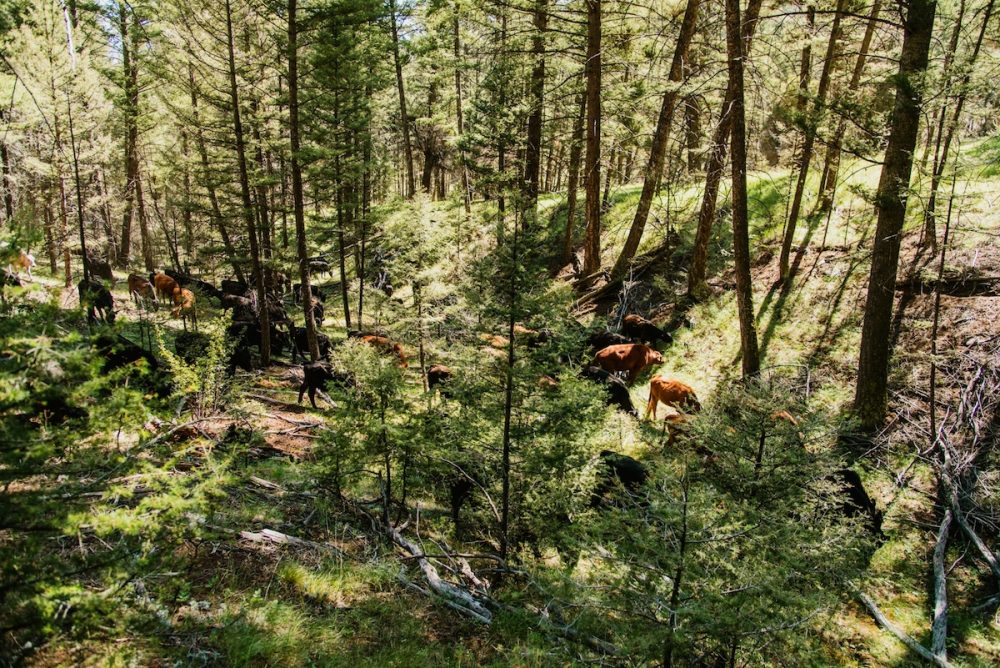
Moose Creek. Hat Creek Range.
Today, this February, I wonder if the “Moose” Tree still stands, hanging on for another year. I could almost spot it with a telescope from the ranch; I know exactly where it stands, albeit about 20 miles away. We’ve had some extremely windy squalls come down off the range this winter, and now, the peaks around Moose are white with heavy snow.
The loggers and tree markers never got to it; the patriarch of Moose was too remote. At least it was free from the slash of blue paint and the saw. There’s a few remote stands of old growth that still remain, but all are in trouble from overcrowding due to the lack of cleansing fire in a fully natural regime, and any sort of management in an un-natural one.
There’s things that can be done to save them, but I wonder if the government can move fast enough. Agility has never been the strong point of governance; it’s why policy is more often written in a reactive context than a proactive one.
So for now, barring any miracle of prudence on the part of policymakers and land managers, I’ll just stick to what I said before about the demise of the Moose Tree: It’s not if. It’s when.
One day, on probably a winter day like tomorrow, with heavy snow and dense Arctic breezes that blow off of the deep snows blanketing the glacial cirques of Taylor Peak, the tree in Moose that rises to a two-fold prominence above all others beneath will creak and groan as roots pop. And then, imperceptibly at first, nudged by the wind, the Moose will finally yield to the slight lean that’s been its companion for centuries.
The fall will start slow, but 25 tons of old-growth tight ringed wood weight formed over 500 years will follow then to the full force of gravity increasing in perpendicularity to it. And it will crash, inevitably taking with it some of its younger progeny—from its own cone-fall—that ended up competing for life with this, the patriarch of the forest.
And we’ll not hear it. But I will witness the return of it to the soil, and mourn because thousands of years of ecosystem elegance ended because of the hubris of mankind.
And it’s dang hard to see. To some degree, as graziers, we’ve been able to re-write a message of hope into the grasslands, creeks and sage with our cows, bringing nature a respite and a chance to finally regenerate. Desertification is finally spinning backwards, as we see beavers, birds, bull trout, and, even occasional moose returning.
Unfortunately, our beeves can perform little direct impact to our forests. We’ve been able to get aspen trees to come back, but the conifer forest would only restore through intervention either by forestry or fire. The exciting thing is that we can help with both, using our cows. They can create targeted fuel breaks to control and contain prescribed fire. Where cows need to be left out of the equation while forest trees regenerate, we can easily keep them out.
We could be partners, but without the land managers on board, we can only do so much. Let’s hope together, and embrace at least the possibility.
Happy Trails.
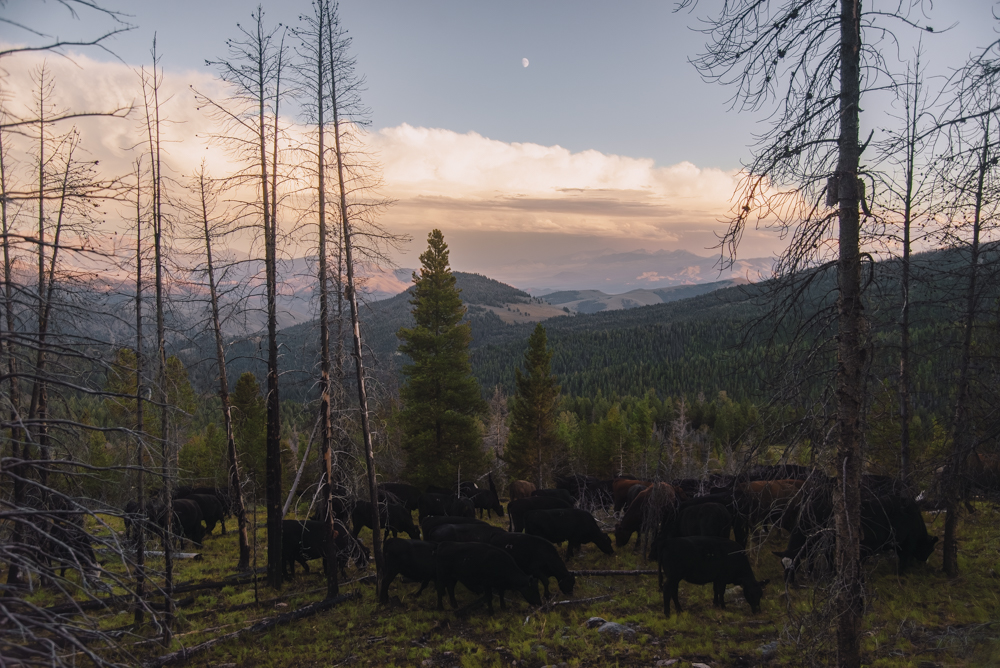

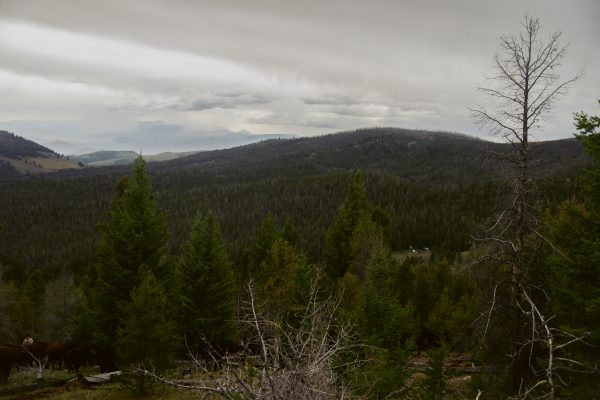
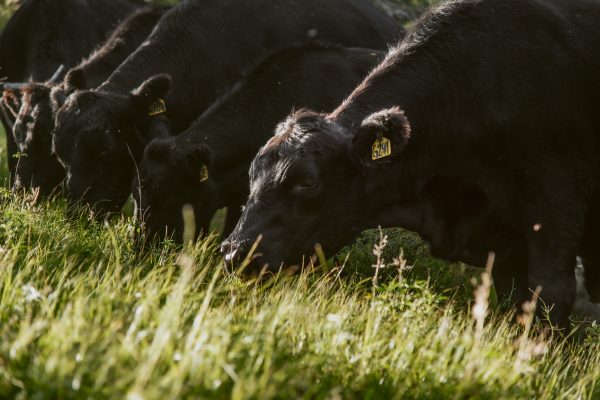
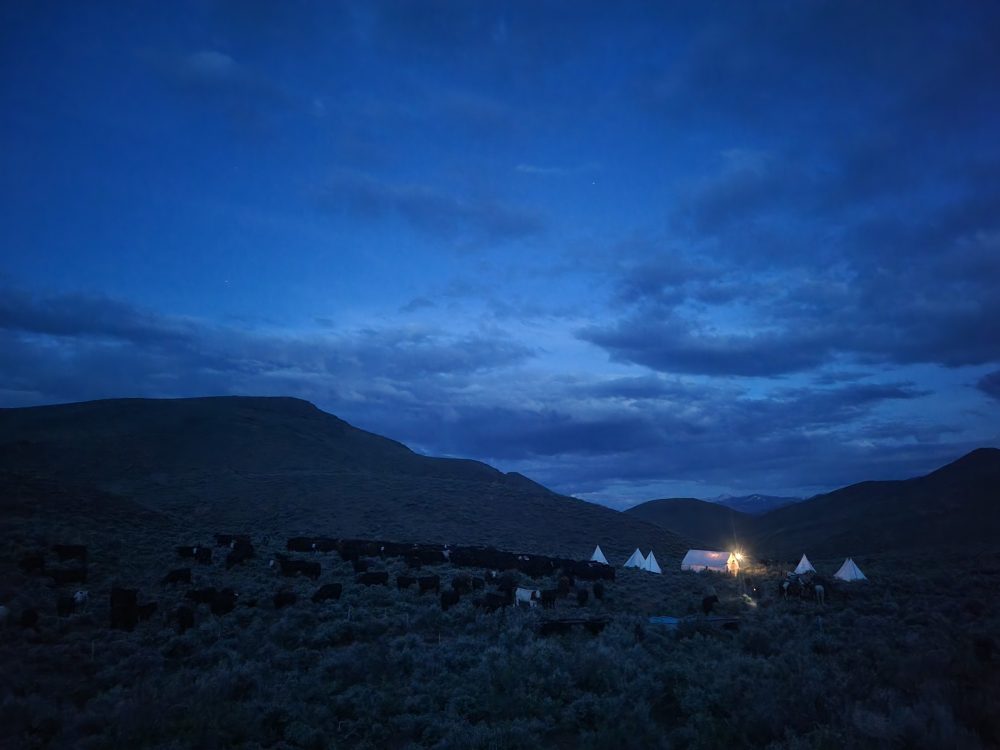
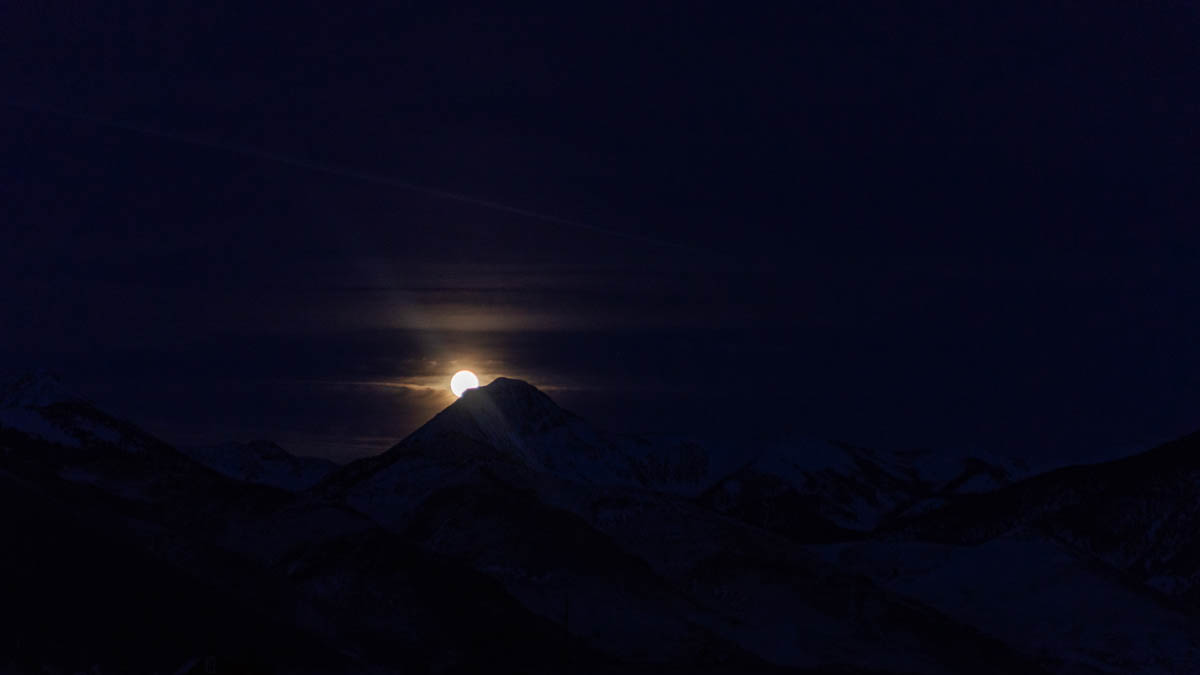

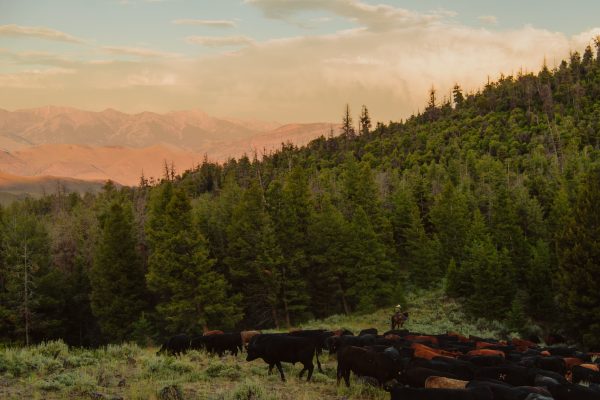
Leave a Reply